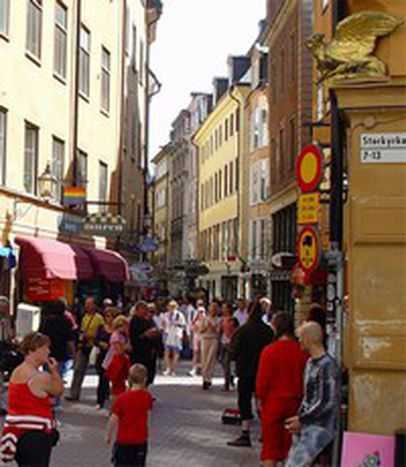
Europe’s star pupils in social responsibility
Published on
Translation by:
 dominic harrison
dominic harrison
As continental Europe groans under the pressure of rising unemployment and as Britain battles with the problem of the ‘working poor’, Scandinavians can sleep soundly at night: a solid economy and social security have become mutually compatible.
Not so long ago, sceptics predicted the imminent death of the Scandinavian welfare system, then characterised by its financial problems and unprecedented levels of unemployment. A decade later, future estimations are much kinder and nowadays one even talks of the ‘Scandinavian role model’. So what lies behind the legendary Scandinavian welfare state?
Three types of social security
Three welfare state models cohabit in Europe. Each differs from the other through its approach to the division of responsibilities between the state, the market and the family. The Anglo-Saxon, or liberal, model (as seen in Britain, the US and Canada) firmly believes in the power of the market. Important societal concerns, such as health and education, are privately organised and social support is limited to the prevention of poverty. Its motto is Yes to welfare, but only for the lowliest, and no chance of ‘welfare scrounging’.
Whereas Anglo-Saxon liberalism is miserly when it comes to paying out, the continent’s conservative welfare state is somewhat more generous. Welfare systems established in Austria, Germany, France and Italy support the unemployed and the retired with an allowance approaching the value of their employed wage and, in doing so, uphold the prevailing social status. This focus on fixed contract workers as the ‘norm’ and benefits on a sliding scale ends up reproducing the social inequalities present in the workplace through social security benefits.
And finally there is the Scandinavian model. Welfare? Yes please, and of the highest order. Social rights are held irrespective of your employment and family situation as everyone is included in one single, universal social security system. The results can easily be seen. The economic conditions and levels of employment seen in Sweden, Norway and Denmark place the Scandinavian trio high up European and world rankings: the highest levels of women in employment (at around 72% according to the OECD’s Employment Outlook 2005, pdf), relatively low unemployment figures (between 4.4% and 6.4%) and exemplary policy on equality, education, the environment and debt cancellation.
One for all and all for one
The northern states can afford generous welfare systems because they ask a lot of their taxpayers. High taxes on consumption (value added tax at 25% in Denmark and Sweden) and a dual income tax regime, which relieves the tax burden on businesses trading internationally but taxes income heavily, allows the Scandinavian nations to retain their welfare state whilst at the same time remaining attractive to foreign investment. Scandinavians pay higher taxes with little complaint as they are well aware of the benefits they receive as a result. One such benefit is an effective childcare system, which allows women to have children and remain in work. Another advantage is the public health service, which prescribes Norwegians suffering from rheumatism a four week break in the Canary Islands. Or perhaps Swedish laws for parental leave, which allow parents to return to their old job. As even the better-off gain something from the state-run social security system, the welfare state is built on a solid foundation of support from all sections of society.
Problem-solving ‘Scandinavian style’
The Scandinavian welfare states have still had to face numerous crises. During the first few years of the 1990s, Sweden’s unemployment levels rose from 1.5% (1989) to 8.2% (1993) and Denmark and Norway experienced similar problems. This was a heavy blow for a welfare state system whose high social standards rely on full employment. The fact that Scandinavia’s welfare states managed to reform in the 1990s without compromising their ideology is also thanks to the support of the trade unions. With 80% of workers as members, and therefore a political force to be taken seriously, the unions embraced the reforms rather than blocking them.
Of course, in Scandinavia too the welfare state has been slimmed down over the past few years. However, as far as state expenditure on social security is concerned, the Scandinavian nations still assume a leading role in international comparisons: they won’t allow their place at the top of the class to slip just yet.
Translated from Europas soziale Musterschüler


